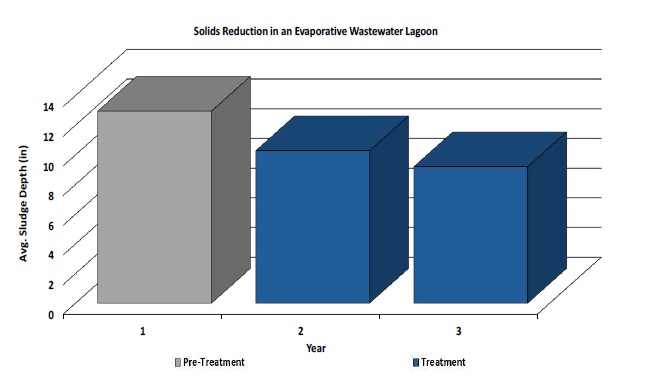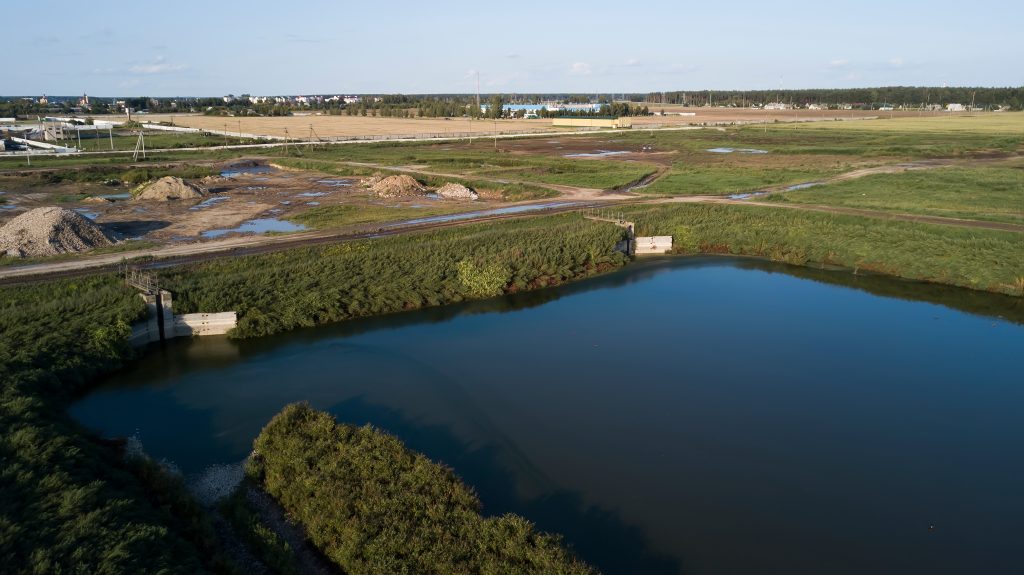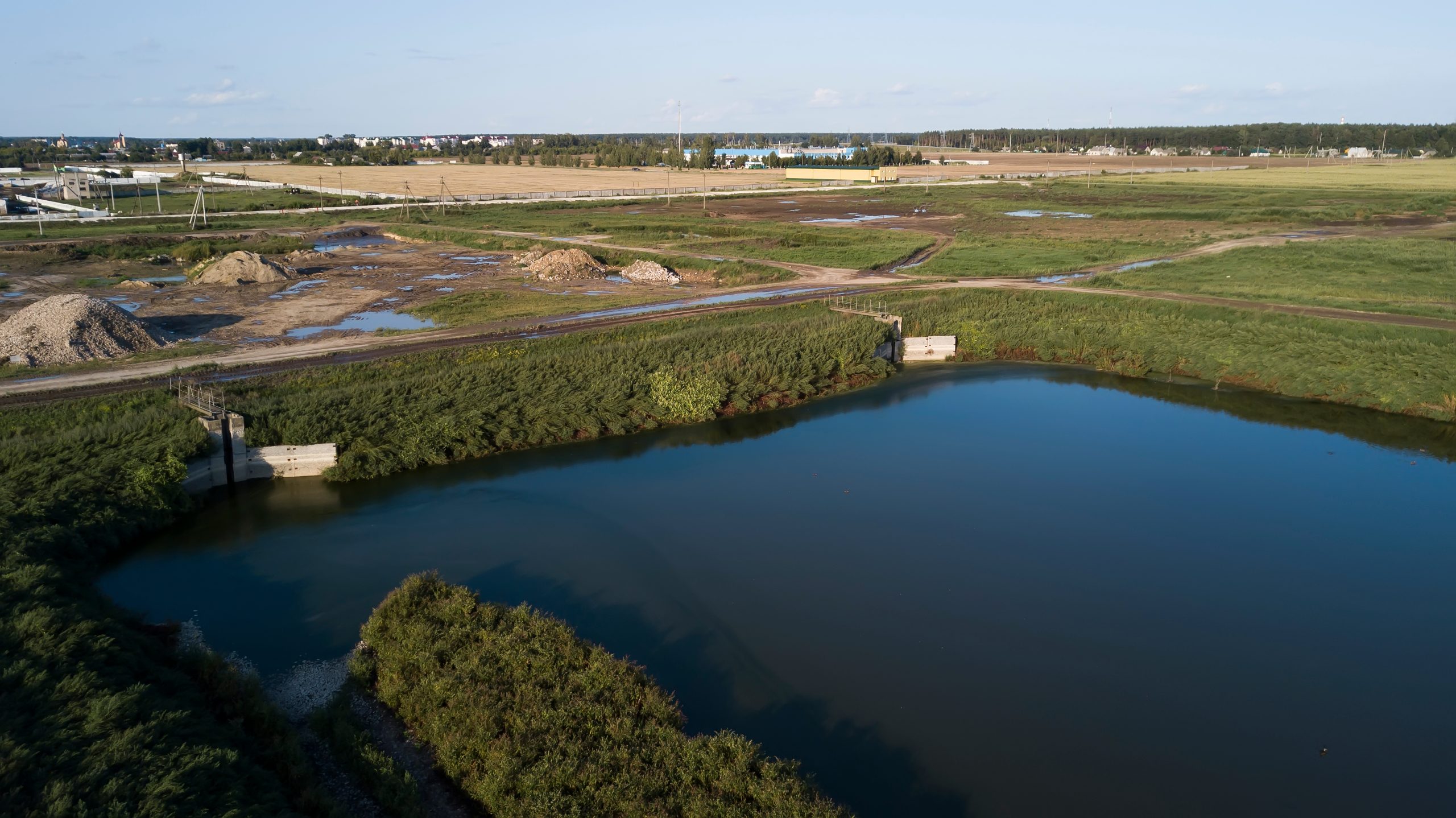Evaporative Lagoon 0.9 MGD
Sludge accumulation is common in municipal lagoon systems. These processes are often overloaded with poorly degraded solids in influent wastewater flows. To
improve solids reduction and overall treatment quality in the above lagoon systems, bioaugmentation can be implemented.
Augmenting cultures of wastewater bacteria ahead of a treatment pond/s can increase the processing time of organic inputs improving overall solids removal. The following bioaugmentation case study describes the use of ProBiotic Scrubber® II (PBII) for reducing accumulated sludge in a large evaporative lagoon system.
A 55-acre wastewater treatment lagoon in North Eastern Utah received flows from two small towns at an influent rate of 0.9 MGD. During the lagoon’s annual sludge inspection, the Utah Rural Water Wastewater Technician assessing the system noticed there were excess solids accumulating in the basin.
The sludge buildup was great enough to diminish the treatment capacity of the system. This issue could be solved by dredging the solids. However, to avoid the high cost of mechanical dredging, the lagoon supervisors sought a biological solution to reduce the sludge.
The town wastewater management decided to use BioLynceus® bioaugmentation to reduce the sludge buildup. Product was implemented at the facility quickly before the treatment process was entirely inhibited by sludge.

Figure 1. Average sludge depths in the evaporative lagoon were determined from annual sludge profiles. Average depth values were calculated for the year before PBII treatment (grey) and two years during treatment (blue).
After one year of treatment, the sludge depth in the lagoon was reduced by an average of 21%. The second year using PBII the sludge depth was decreased by an additional 10%.
The sludge density was also reduced. Augmenting the lagoon collection system and headworks with ProBiotic Dredging® helped implement an effective wastewater biomass that reduce sludge in the lagoon system.
BioLynceus® ProBiotic Scrubber® II promotes sludge degradation in wastewater lagoons.



